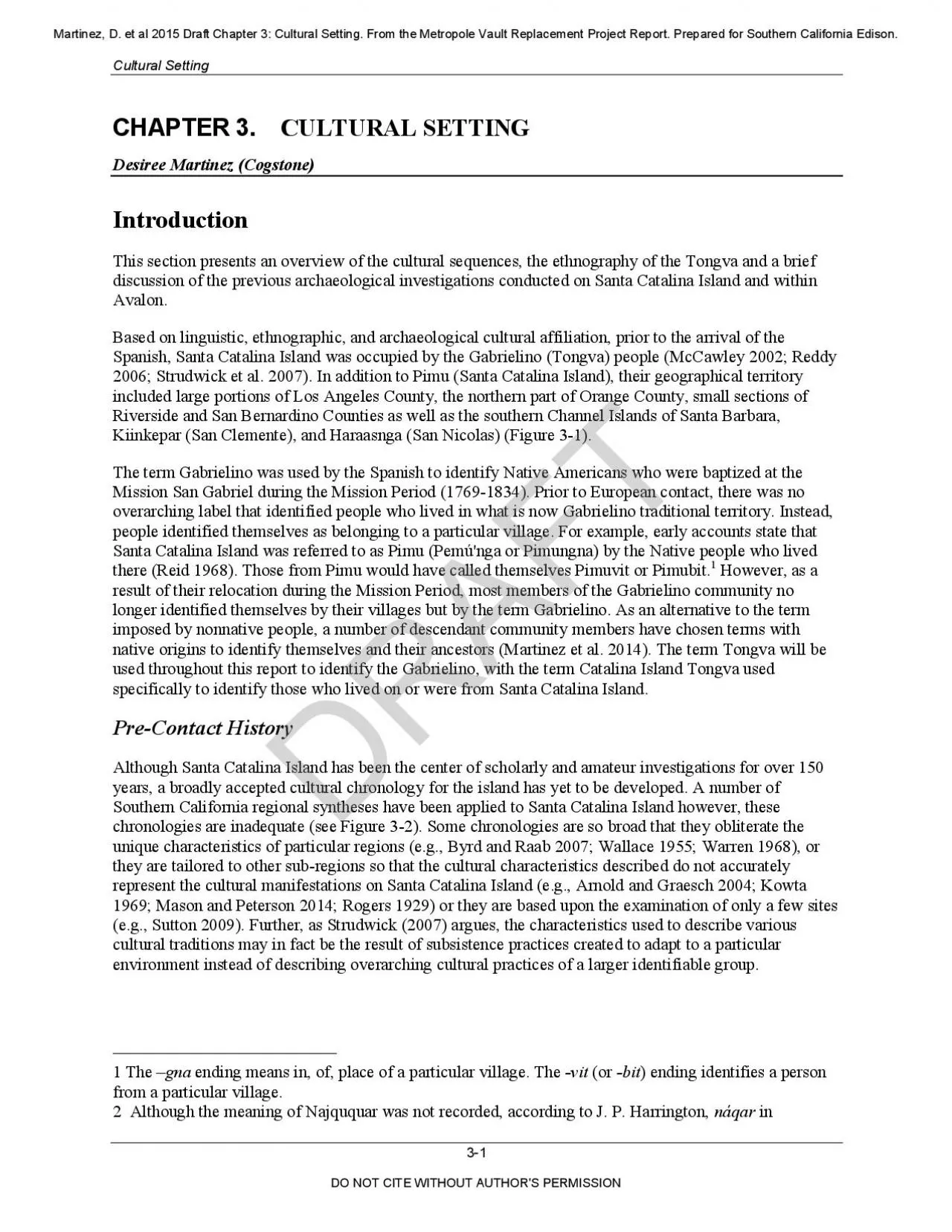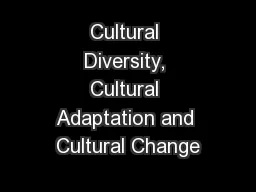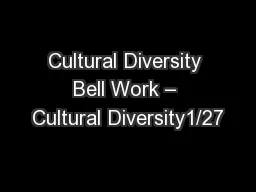PDF-Cultural Setting
Author : beatrice | Published Date : 2021-06-20
31 CHAPTER 3CULTURAL SETTINGDesiree Martinez Cogstone IntroductionThis section presents an overviewof the cultural sequencesthe ethnography of the Tongvaand a brief
Presentation Embed Code
Download Presentation
Download Presentation The PPT/PDF document "Cultural Setting" is the property of its rightful owner. Permission is granted to download and print the materials on this website for personal, non-commercial use only, and to display it on your personal computer provided you do not modify the materials and that you retain all copyright notices contained in the materials. By downloading content from our website, you accept the terms of this agreement.
Cultural Setting: Transcript
Download Rules Of Document
"Cultural Setting"The content belongs to its owner. You may download and print it for personal use, without modification, and keep all copyright notices. By downloading, you agree to these terms.
Related Documents














